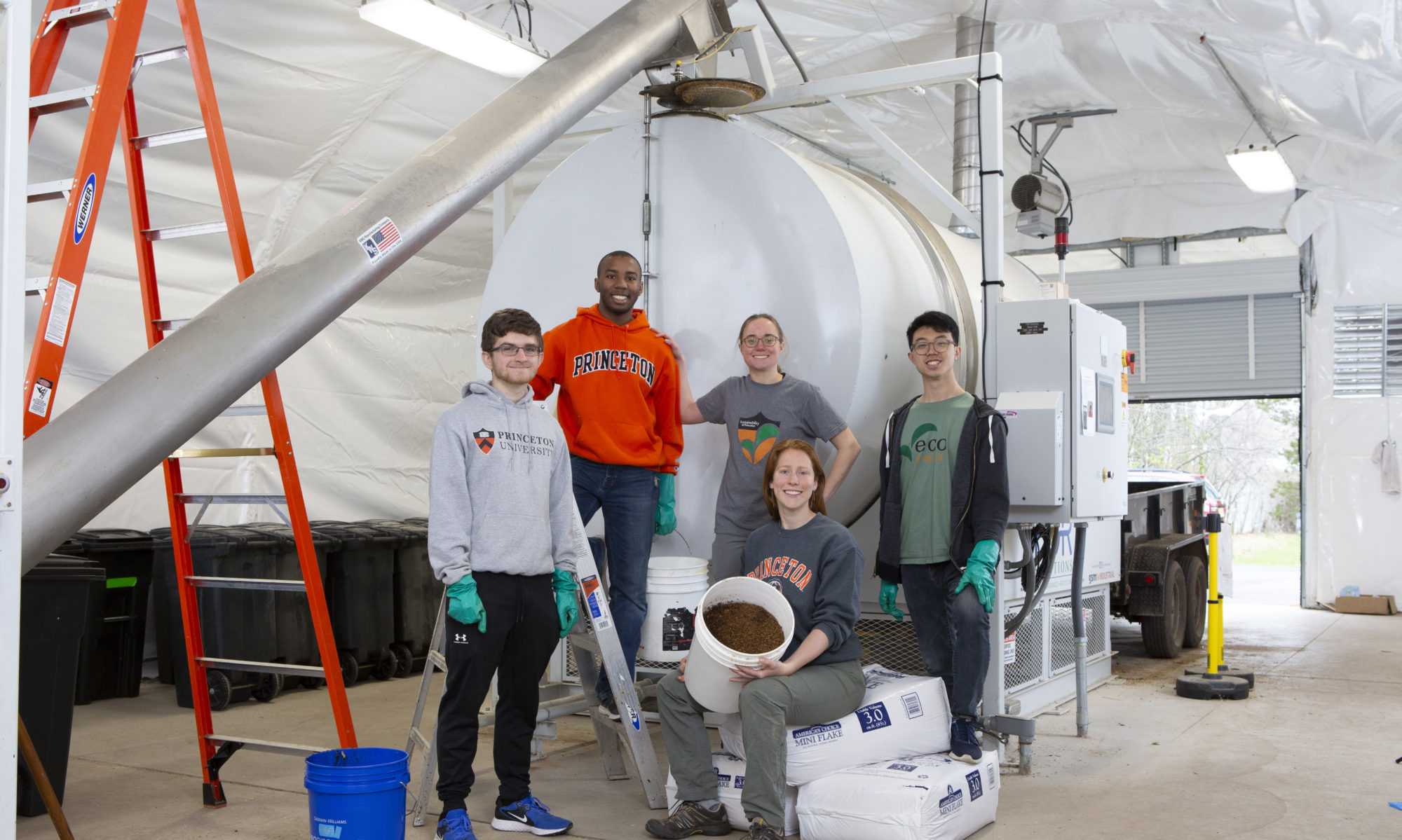Research on understanding compostable product decomposition in a University setting

Left: Off-loading of low wood compost from composter. Right: Low wood treatment pile in outdoor compost.
In our last post, we discussed improvements made in the Frist Food Gallery designed to keep food waste and certified compostable products (compostables) out of landfills and instead redirect them to the S.C.R.A.P. Lab. In this post, we will dive deeper into the composting impacts from the integration of compostables from Eco-Products based on research findings from Dr. Xinning Zhang’s First-Year Seminar (FRS 115): Decomposing the Science of Composting: How to Turn Waste into Resource (2023 and 2024) and her Geoscience student, Isabella Sibaja ‘26.
In 2023, the FRS class identified a longer curing time was required for compost to reach suitable maturation when compostables were added. This result led to an adjustment in the unloading cycle to occur once every 6 to 7 weeks in 2024, rather than the previously tested 7 to 10 days. At the same time, the FRS class tested “low(er) wood” (40% compostables, 5% wood) and “high(er) wood” (30% compostables, 20% wood) input scenarios by weight. For both scenarios, the longer residency time allowed the temperature inside of the vessel to reach thermophilic levels (>104˚F; Figure 1), enabling faster feedstock decomposition and allowing compost to mature quickly and effectively.
[1] Average temperatures at the beginning (Port 1), middle (Port 2), and end (Port 3) of the composting vessel reached the Thermophilic Stage (>104˚F) in 2024.
Isabella Sibaja continued this investigation on the composts’ maturity under the guidance of Dr. Zhang and support from Gina Talt. She used 16s ribosomal DNA analysis to identify the diversity of microbial populations found in both the “low wood” and “high wood” treatments in the different ports of the in-vessel composter.
Sibaja interestingly identified the presence of microbes such as Bacillaceae and Actinomarinales which are correlated with high temperatures. Below Figure 2 identifies Port 3 as having increased microbial diversity and maturation compared to Ports 1 and 2. This finding is reasonable since compost spends the most time in Port 3 in the in-vessel composting system as it waits to be unloaded. Yet, these results may be due to the increased presence of compostables, increased material in the system, prior microbial activity, or another confounding factor. Regardless, they imply prolonged thermophilic stages, indicating that more time would be needed for the compost to reach maturity in both treatments.
[2] Microbiome diversity identified from Ports 1, 2, and 3 between 9/18/24 and 11/13/24, measured weekly; Produced by Isabella Sibaja, Geosciences ‘26
Therefore, the composts were tested again once off-loaded from the composter and spent 3-4 months in outdoor curing piles. The “low wood” treatment was found to contain more mature and stable compost compared to the “high wood” treatment after analysis by the class and commercial lab testing as shown in Figure 3 comparing metrics of the treatments to the recommended values of finished compost.

[3] Average of three composite samples. All data analyzed by a commercial lab. Pile curing data for 2023 composts not included due to poor in-vessel results. *Per guidelines from the CCREF Compost Operations Training Course (2019) and certified compost standards in the Seal of Testing Assurance program
This significance can be attributed to the Eco-Products’ carbon-rich fibrous and starchy composition, enough to provide adequate carbon needs and sustain microbial activity in decomposition. In other words, the compostables contain less lignin and thus more “bioavailable carbon” than the traditionally-used bulking agent of wood chips, indicating less required breakdown steps, and leading to more mature compost.
In conclusion, compostable products can successfully decompose in a reasonable timeframe and create mature and stable compost. They can even substitute for traditional carbon, however, there are still several factors to consider.
One of the drawbacks stemming from compostables is their particle size compared to wood chips. After shredding, the compostables’ smaller particle size increased compactness within the vessel, producing more anaerobic (oxygen-depleted) pockets which led to significantly increased methane production. However, the total GHG emissions produced by composting during the in-vessel stage was still 85% less than that of a landfill, continuing to prove composting’s positive environmental impact.
Amongst this collected data there does appear to be some slight differences with the addition of compostables regarding maturity, microbial diversity, and gas emissions. However, since these differences appear to be subtle and do not impede the system’s functionality, these compostables can be considered a suitable alternative bulking agent. Specific to Princeton, this compost can best be used as a soil amendment for Grounds’ landscaping, an ideal goal as we strive closer towards a circular economy as a campus.

One Reply to “Are compostable products actually compostable?”